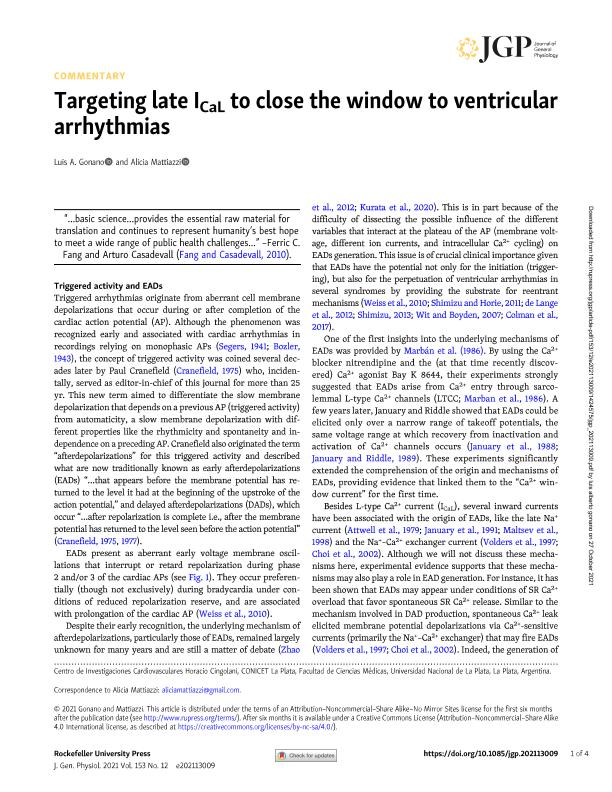Artículo
Targeting late ICaL to close the window to ventricular arrhythmias
Fecha de publicación:
10/2021
Editorial:
Rockefeller University Press
Revista:
Journal Of General Physiology
ISSN:
0022-1295
Idioma:
Inglés
Tipo de recurso:
Artículo publicado
Clasificación temática:
Resumen
Triggered arrhythmias originate from aberrant cell membrane depolarizations that occur during or after completion of the cardiac action potential (AP). Although the phenomenon was recognized early and associated with cardiac arrhythmias in recordings relying on monophasic APs (Segers, 1941; Bozler, 1943), the concept of triggered activity was coined several decades later by Paul Cranefield (Cranefield, 1975) who, incidentally, served as editor-in-chief of this journal for more than 25 yr. This new term aimed to differentiate the slow membrane depolarization that depends on a previous AP (triggered activity) from automaticity, a slow membrane depolarization with different properties like the rhythmicity and spontaneity and independence on a preceding AP. Cranefield also originated the term “afterdepolarizations” for this triggered activity and described what are now traditionally known as early afterdepolarizations (EADs) “…that appears before the membrane potential has returned to the level it had at the beginning of the upstroke of the action potential,” and delayed afterdepolarizations (DADs), which occur “…after repolarization is complete i.e., after the membrane potential has returned to the level seen before the action potential” (Cranefield, 1975, 1977).
Palabras clave:
ICA L
,
ARRHYTHMIA
,
ROSCOVITINE
,
HEART
Archivos asociados
Licencia
Identificadores
Colecciones
Articulos(CIC)
Articulos de CENTRO DE INVEST.CARDIOVASCULARES (I)
Articulos de CENTRO DE INVEST.CARDIOVASCULARES (I)
Citación
Gonano, Luis Alberto; Mattiazzi, Ramona Alicia; Targeting late ICaL to close the window to ventricular arrhythmias; Rockefeller University Press; Journal Of General Physiology; 153; 12; 10-2021; 1-4
Compartir
Altmétricas




